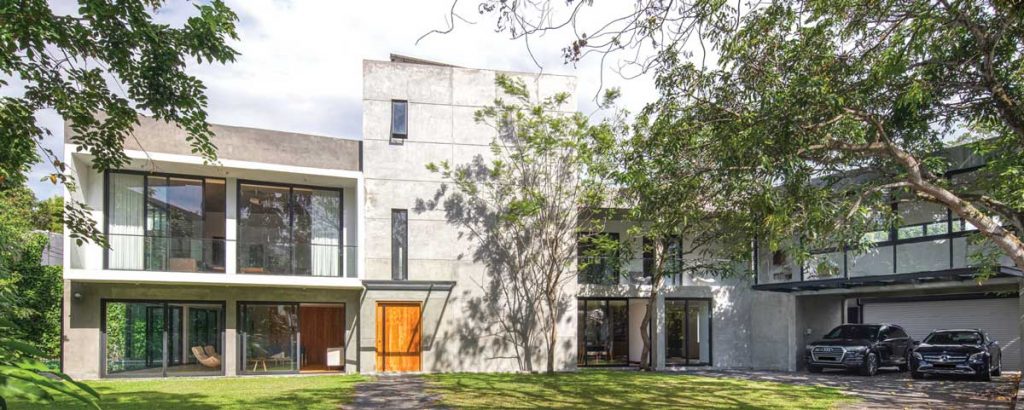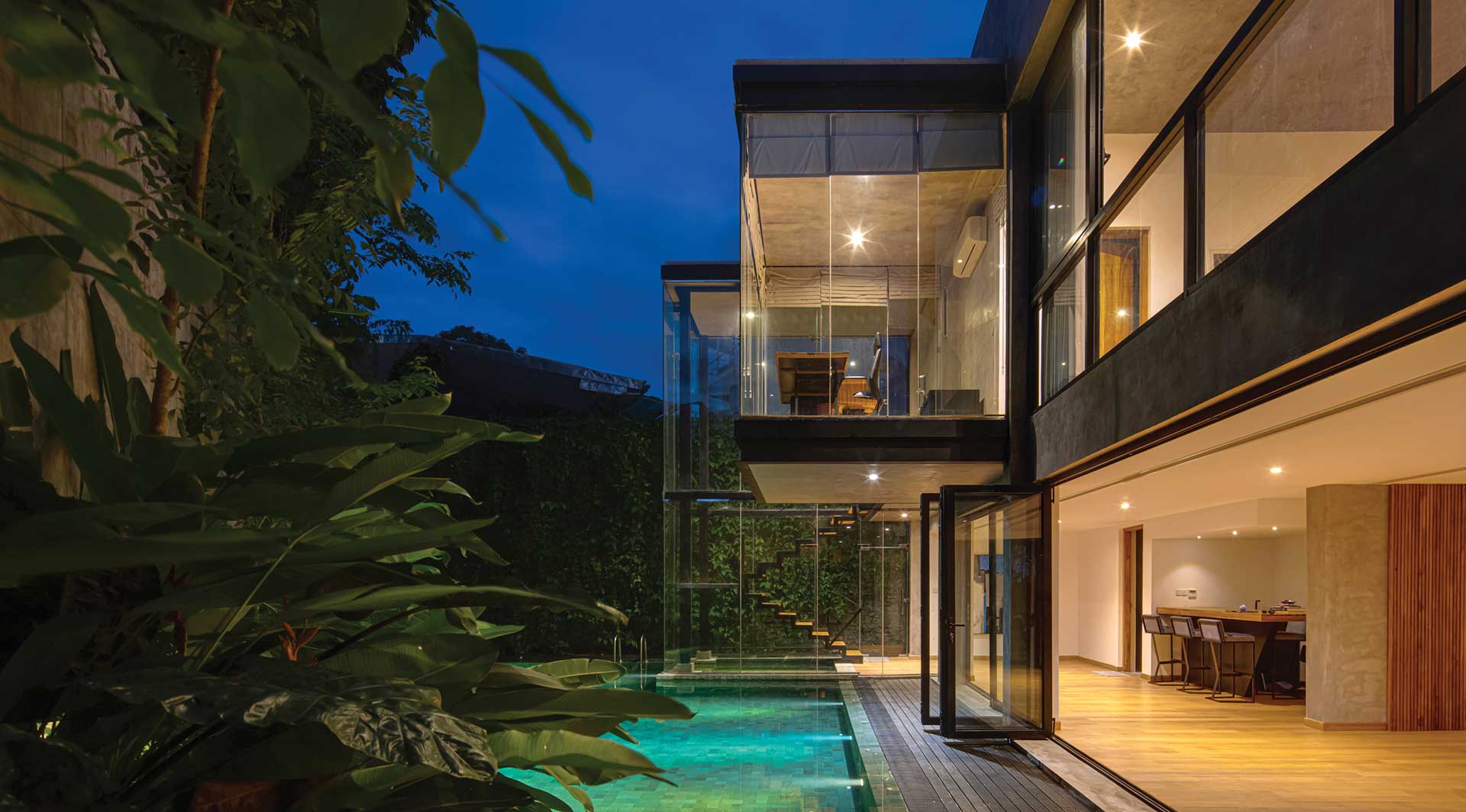
FORM FOLLOWS FUNCTION
Bringing beauty and life to spaces via architecture, art and design
Amoda Rathnayake in conversation with Nicola Jayasundera
With the facet of self-confidence instilled by her mother, Amoda Rathnayake followed a passion for art and design – and established a design firm. Today, her fervent wish is to create spaces that nurture the growth of beauty in people. Amoda hopes her designs will evoke a sense of warmth and joy in others, and remind them that life is beautiful.
As Principal Architect at Amoda Rathnayake Associates (ARA), Amoda’s most memorable accomplishment is her first and largest project – an office space for Niru Diamonds. She borrowed heavily from modernist and brutalist styles, and created a unique facade that was inspired by the atomic structure of diamonds.
Q: What is your story, in brief?
A: During my childhood, I had a lot of fun growing up in the beautiful city of Kandy. I loved the great outdoors and had a passion for a physically challenging lifestyle. While studying at Mahamaya Girls’ College, I played basketball, swam and was involved in athletics.
I found my true calling in art and design following my A-Levels, and completed a degree in the latter. Four years later, I founded ARA in 2015 and its construction arm (Jayabuilders) in 2018.

Q: How did you become interested in this field?
A: Since I loved the outdoors lifestyle, I pursued many related activities such as scuba diving, hiking and travelling. I also had a penchant for art and music as they allowed me to express myself.
While growing up, I realised my true calling lay in art and chose to enter the field of design. I believe my love for creating attractive spaces is inspired by the beauty of colour and form, which I see and experience in nature.
Q: What are the influences of modernism on Sri Lankan architecture?
A: Possibly the most important axiom in modernist architecture is ‘form follows function.’
The modernist movement thrived by embracing a minimalistic approach to architecture, shunning ornamentation while always focussing on the rational use of functional structures, as well as the use of modern materials such as glass, steel and concrete.
These trends are becoming increasingly popular in Sri Lanka – both in commercial and residential buildings. They can take the form of open floor plans that are both functional and aesthetic, structures that follow geometric shapes, the imaginative utilisation of areas that reduces wasted space and a seamless transition to the outdoors that’s greatly influenced by tropical modernism.
Q: And how do architects balance design, functionality and aesthetics in today’s context?
A: I follow the ‘less is more’ approach when designing projects, and use more modernist and minimalistic design principles. This allows these projects to remain contemporary and functional.
Understanding the functional requirements of clients and meeting their workflow, comfort and space requirements are extremely im-portant.
The aesthetic component comes from paying careful attention to clients’ personalities and styles. It’s important to make use of shapes, colours, furniture and lighting accessories to give these projects an aesthetically satisfying finish.
This blend of functional and aesthetic requirements is what makes an architect’s designs unique.






